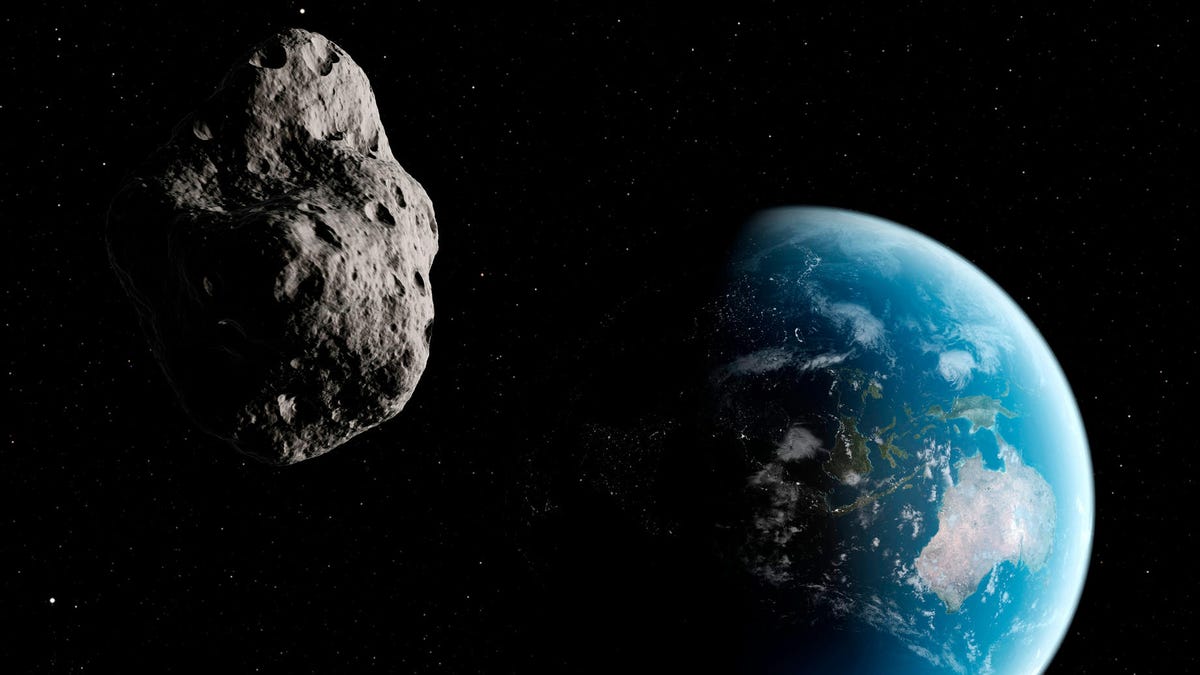NASA outlines its plan to defend the Earth from asteroids
Move over, Space Force.

If anyone understands the gravity of a situation involving asteroids colliding with the Earth, it's NASA .
On Wednesday, the space agency, in conjunction with The Office of Science and Technology Policy (OSTP), outlined an audacious new strategy and five chief goals to defend the Earth from potentially devastating asteroid impacts in its report "National Near-Earth Object Preparedness Strategy and Action Plan."
The plan outlines five chief goals with the aim of enhancing detection of Near-Earth Objects (NEOs), involving improving its capacity to predict when and where those objects may impact the Earth and developing technologies that can deflect or disrupt large objects that enter our orbit.
Although most large NEOs could inflict devastating consequences should they collide with the Earth, they are much easier for NASA to track. The agency is confident it has tracked and catalogued any potential life-obliterating asteroid and none are currently on a collision course with the planet.
That doesn't mean we're in the clear, though.
NASA knows how damaging a potential impact from smaller asteroids might be, highlighting the Tunguska event in its report. That incident refers to an asteroid, "approximately 40-60 meters in size" exploding over a Russian town in 1908, "levelling over 2,000 square kilometers of forest."
It goes on to say that "there are over 300,000 objects larger than 40 meters that could pose an impact hazard and would be very challenging to detect more than a few days in advance."
This is where the strategy and action plan comes in.
NASA will continue to develop its capabilities to detect, track and remotely characterize NEOs, to provide "critical improvements" allowing for better understanding of asteroids ranging from 50 to 140 meters in size while also improving its capability to more accurately model and analyse NEOs and the effects they may have if they were to slam into the Earth.
Although NASA has made great inroads into more accurately detecting these extraterrestrial objects in the last 40 years, there are still many things we can learn about them -- and that detailed information may require face-to-asteroid reconnaissance missions, flying out to the objects and providing "up-close imagery, compositional information and mass measurements."
In the short term, some of the emerging technologies NASA wish to develop to combat NEOs include two types of spacecraft: "Kinetic impactors", which would be deliberately flown into an NEO to disrupt its orbit and "gravity tractors" which would be able to more slowly course-correct an NEO's orbit by flying close to the object over an extended period of time. In addition, NASA will investigate the potential to use nuclear devices, as originally outlined in a 2010 report by the National Academy of Science.
It'll be like Armageddon, but without Bruce Willis and Aerosmith.
Okay, I'll level with you, it won't be like Armageddon at all. In the 'nuclear standoff burst' scenario that NASA will explore, a thin surface layer of the NEO is strongly heated, accelerating away from the object and forcing the main body off a potential collision with the Earth.
If, for some reason, you're still worried, trust us, you don't need to go building that apocalyptic survival bunker just yet. Speaking at NASA's media teleconference on Wednesday, Aaron Miles of the OSTP noted that "NASA and partners have identified 95 percent of asteroids large enough to cause global catastrophe."
Who even needs a Space Force!?
'Hello, humans': Google's Duplex could make Assistant the most lifelike AI yet.
Batteries Not Included: The CNET team reminds us why tech is cool.
Correction Jun. 21 at 4:03 p.m.: The 2010 report was conducted by the National Academy of Sciences. In addition, clarified how NASA use nuclear devices to alter NEO orbits.

